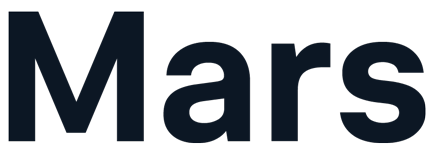Splunk is a key part of Slack’s ability to operate a zero trust network. Because Splunk gives us the visibility into all the activity that’s happening across all of our cloud services.
Slack needed a best-in-class tool to gain better visibility and control over their security landscape — and when COVID-19 hit, this need became critical.
With Splunk, Slack verifies security across all products and applications, operating in a zero trust network to ensure a secure experience for the more than 12 million daily active users who rely on its platform.
Across the globe, more people are working from home than ever before.
A single pane of glass for all conversations, Slack creates an environment where remote workers can organize information and conversations around data. Every day, more than 12 million active users and 750,000 organizations rely on Slack to be their collaboration hub to bring people, information and tools together.
When the COVID-19 pandemic hit, Slack had to transition more than 1,600 employees to remote work while also continuing to provide a secure, enterprise-grade service to its booming user base.
With Splunk, Slack has seamlessly transitioned to remote work, operating under a zero trust network. The company verifies security with visibility into all activity occurring across its cloud services.
Outcomes
Uniquely Positioned for the Pandemic
Over its history, Slack has innovated its interface to provide an interactive experience for its users. “It’s designed to provide a virtual world that offers the best possible surrogate for the real-world interaction that we have with people,” says Larkin Ryder, director of product security at Slack.
When COVID-19 infections began to rise, the Slack platform proved ideal for remote work. “Everything about the way we’ve designed the interface of Slack — and the tools it provides and supports — is so that you can feel as close as you possibly can to the people you’re working with,” Ryder says. “You can have this organic conversation and discussion richly contextualized with information.”
Turning Data Into Action
Yet with a steep surge in demand during the pandemic, Slack needed to ensure that its security program was working effectively. As a result, the organization used Splunk’s expertise to make enhancements — from launching new API integrations to functioning in a zero trust network.
“We want to be the organization that’s always working with best-in-class tools like Splunk, which gives you a single view across your organization and provides all the analytics you need,” Ryder says.
Bring Data to Every Security Challenge
Slack integrated its analytics API with Splunk, making it easier for users to keep a finger on the pulse of their organization, especially during a pandemic. The API integration enabled customers to get information around topics and channels of messaging between people, allowing leadership to stay connected. All Slack’s critical applications now send logging content into Splunk, bringing all data into one place offering insight into behavior patterns.
For instance, when a customer needed Slack’s help to investigate a specific behavior pattern within the application, Slack immediately recommended that they turn to Splunk. “We were able to get our customer from a point where they knew very little about the behavior and usage of their Slack instance to leveraging Splunk for full visibility,” Ryder says. “They were up and running in a matter of hours and could use Splunk and Slack together to take action on their data and protect their environment.”
Running a Secure Ecosystem
Integration is key to managing complexity around Slack’s security environment.
“If you can’t integrate with Splunk, we can’t use your service,” Ryder says. “You have to be able to work with our best-in-class products ecosystem. And if you’re going to be an island of data that requires people to spin up a whole area of expertise and have a separate team to manage, we just don’t have time for that.” This dedication to strong integrations has allowed Slack’s customers, some of whom have tens of thousands of Slack teams, to visualize activity and connect the dots with applications and various rule sets in place.
Splunk is how we verify that our security program is operating across our entire fleet and across our corporate applications the way we expect it to, the way we must to assure the integrity of our company.
Operating in a zero trust network — where users are authenticated and authorized — has strengthened Slack’s security posture. “Splunk is a key part of Slack’s ability to operate a zero trust network,” Ryder says. “Because Splunk gives us the visibility into all the activity that’s happening across all of our cloud services.”
For Slack, staying secure has been essential as it continues to innovate and stays in lockstep with its customers. “Our employees do a great job of managing their power and control over our security systems, but of course the security engineer’s adage is ‘trust but verify,’” says Ryder. “Splunk is how we verify that our security program is operating across our entire fleet and across our corporate applications the way we expect it to, the way we must to assure the integrity of our company.”









